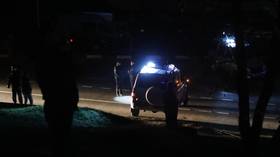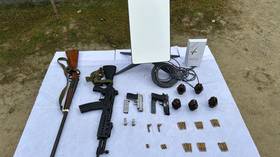I was a victim of the Yorkshire Ripper. Why is he getting an inquest into his death, when my case has been ignored?

Mo Lea was brutally beaten by Peter Sutcliffe in 1980, but officers didn’t link the attack to him. She now wants an inquiry into police injustices towards abused women, citing a recent murder as proof lessons haven’t been learnt.
When Peter Sutcliffe, one of the UK’s most notorious serial killers, died last November, most assumed that was the last they would hear of him. But an inquest into his death from Covid-19 is underway.
The serial killer, dubbed The Yorkshire Ripper, was transferred from prison to the University Hospital of North Durham, where he succumbed to the virus, aged 74. His ex-wife, Sonia, was notified, and now his medical records are being gathered and witnesses will appear at a coroner’s hearing in September. However, no thought has been extended to his surviving victims.
Mo Lea, then 20, was studying art at Leeds University when she was brutally attacked by Sutcliffe after a night out with friends in October 1980. He smashed her skull with a hammer and stabbed her with a sharpened screwdriver. Passers found her lying covered in blood in a gutter, but she somehow survived. She woke up in hospital with a fractured skull, a fractured cheekbone, a broken jaw and a puncture wound to the back of her skull.
Speaking to RT.com this week, the 61-year-old artist said she didn’t even know an inquest was being held into her attacker’s death. “Perhaps the victims and their families should have been notified before it went to the media,” she tells me. “That would have been a courtesy, but, as usual, we find out things via the media and we’re second-class citizens with regard to the Yorkshire Ripper’s story. I think it’s massively frustrating not to have a courtesy call from the Home Office, the police or anyone to tell us what’s going on with the man who tried to take our lives.”
Sutcliffe is known to have attacked at least a dozen women who survived, but he was never held to account for all the assaults. The police, who were under intense pressure to arrest the serial killer, often didn’t investigate such attacks properly because they didn’t want to attribute them to the Ripper, with all the ensuing furore, publicity and questions they could expect such an outcome to generate. Lea describes it as the facts being “ignored and airbrushed” out of the picture.
Sutcliffe was eventually jailed for life in May 1981 for 13 murders and seven attempted murders. Blunders by the police during the “stunningly mishandled’, misogynistic five-year hunt for him were so many, and so egregious, that an official inquiry was set up after he was finally arrested, by chance, that January. They had questioned the Yorkshire lorry driver NINE times before his capture, but had let him go as they thought the culprit was a man with a Geordie (that is, Newcastle) accent calling himself ‘Wearside Jack’. He turned out to be a hoaxer.
“There never has been closure for me as my case was never brought to court, along with the other women,” Lea explains. “They were not interested in me. I was really lucky to be found struggling for my life on the pavement, but at the time, the Ripper Squad, as they were called, were putting all their eggs in one basket and investigating ‘Wearside Jack’.
“They thought the Ripper had a Geordie accent and I’ve since learnt that detectives on the ground at Yorkshire Police, who’ve spoken to me in person, they knew it was Peter Sutcliffe [who attacked me], but when they went to the upper echelons, they were told in no uncertain terms, ‘If you mention Sutcliffe again, you’ll go back on the beat.’ Apparently, the chief constable was banging his fist on the table while he told them, ‘It was not the Ripper.’
Also on rt.com Yorkshire Ripper needs white stick to get around jail after botched op leaves him blind“That blatant ignorance and old-fashioned, dogmatic, dictatorial approach of the police at the time meant that I never got justice.”
Lea is a tremendously positive person and has used the news of Sutcliffe’s inquest to call for an inquest of her own: into the forgotten victims and why they were never supported.She has spoken to a solicitor and wants to start an official inquiry into how the police dealt with her and the other silenced survivors.
What causes her distress is that Lord Byford’s review into the bungled police investigation, published in December 1981, contained more than 100 recommendations to improve future investigations, but has still not been implemented in full.
She explains: “There needs to be an inquiry. My family didn’t know what to do with me – I came home a physical wreck. I had my jaw wired up. No one was convicted. They were like, ‘What happened to you? Who was it?’
“Lord Byford’s report was published in December and he [Sutcliffe] was only convicted in May, so it was a handful of months in between and, in that report, the police were required to take action on the recommendations and the Home Office politician at the time, William Whitelaw, was applauding the report and the revelations it made. My name was in there, along with other women’s, but the police decided to shelve it because Sutcliffe was in prison and he couldn’t be retried, so the whole lot was completely shelved. It was devastating.”
Lea used her creativity to draw attention to the ignored report last year, when she projected a drawing of the Lady Justice onto the House of Commons. The drawing was animated, so the scales tipped up and the symbol of female identity tumbled from them.
“It demonstrated the injustice that continues to this day of women who have been attacked,” she says. “It says, ‘Hang on a minute, Westminster! Wake up!’ I projected it onto the House of Commons as that document [the Byford report] is in the library in that very building. It’s my way of saying to them, ‘Don’t just tick the boxes and say it’s done, then file it away – act on the reports! If that had happened, police conduct [today] would be much better than it is.”
Also on rt.com Yorkshire Ripper ‘no longer mentally ill, should return to regular prison’ – psychiatristsOne example where Lea feels there is proof that the police still have improvements to make is in its handling of the recent murder of Sarah Everard. Everard was snatched in London in March this year and killed by a serving police officer, and there were subsequent issues about how a public vigil in her memory was managed.
Lea, who is part of the End Violence Against Women group, says: “We, as women, are treated differently [to men] – I don’t think we’re taken seriously. There’s a change happening now, thankfully, but [what’s needed] is education and advising the police [how to behave], because, at the vigil for Sarah Everard, the police were seen to be manhandling these women who were peaceful and it highlighted the fact that [officers] seem to think they won’t be filmed and [the footage] put out on social media. How naive is that?
“Last year, two policemen were filming the dead bodies of two women [sisters Bibaa Henry and Nicole Smallman, murdered in a park in Wembley, north London] and putting the selfie on their Facebook page [for which they were charged and await sentencing]. This is 2021, [but] it feels like the 1930s, because, even after the war, women had a role – they were in the factories and making stuff, women were empowered by that – but everything seems to have slipped back. I can’t believe I’m arguing the case to be listened to in 2021. It seems ridiculous.”
Lea is keen to speak to forces or visit police stations to pass on what she has garnered from her experience. It seems incredible that a victim of one of Britain’s most notorious killers feels lessons have not been learnt to the degree they should have, despite four decades having passed.
“The police do need to be retrained and give proper consideration to how they conduct themselves towards women who walk into or phone up their services, and take them much more seriously than they have done in the past,” she explains.
Also on rt.com ‘Yorkshire Ripper’ serial killer admits doing ‘bad things’ but says he never attacked men“Perhaps they might think, ‘Oh well, that was 40 years ago. We don’t conduct ourselves like that anymore.’ My question is to take a good, long look at yourselves and take a step back [before asking]: what in the system where you are training police actually addresses this? I’m sure there are parts of it, but it needs to be enhanced… to be broadened and focused on.”
Along with her artwork, Lea is also an author, and, last year, published a book about her ordeal, titled ‘Facing The Yorkshire Ripper: The Art of Survival’. It came out before Sutcliffe died and Lea sent a copy to him in prison, though she had no confirmation he read it. Now, after his death, she is preparing a second edition about the after-effects of the attack.
She explains: “I started writing it 30 years ago, as I needed to put down my feelings, but the book itself is not just about what happened to me, as tragic as it was. It discusses how... art has been an absolutely essential ingredient to my survival. In the very last chapter, I was brave enough to draw the person who tried to kill me. It’s a portrait of Peter Sutcliffe – that iconic image of him with the bow tie and the grin – and then I’m filmed ripping up the Ripper, and the shreds of papers fall to the ground and I walk over them and out of the frame. It makes a very nice concluding chapter. In the book, you can see the journey I’ve had from very dark images from my fine-art degree show right through to the bright, colourful, beautiful drawings which I enjoy making to this day.”
In essence, the book builds on the same message that Lea is trying to send to the police.
Victims are not one-dimensional, and they can be impacted by other things beyond being on the wrong end of a violent attacker.
“Women who survive do extraordinary things in their life – we’re not just stuck in that frame of the 1980s, when we were considered second-class citizens,” she says. “I think the victims should be given much more respect. It’s as though we have no voice, but I do have a voice and I’ve written my book, which tells you how to survive this and how not to be positioned by the press… as an unimportant victim. It’s absolutely vital our voices are heard.”
Despite living her life on her own terms and being a successful artist, Lea is frequently linked to Sutcliffe, who changed his surname to Coonan while in prison.
She explains: “The joy of making the artwork prioritises my back story. Most people in the town I live in know, because I’ve been proactive and did the projection at Westminster, but they know me [as a person too]. I’m just a giggly Scouser and that’s important, so they treat me normally. You’ve got to be down to earth and be told to clean up your mess just like anyone else.”
Also on rt.com France’s most notorious serial killer, ‘Ogre of the Ardennes’, dies in jail at 79The inquest into Sutcliffe’s death in September is not expected to deliver any bombshells. The coroner has stated that there are no suspicious circumstances – the killer is simply said to have refused treatment for Covid-19. But it’s unlikely his story will be let go by the media – there remains a morbid fascination with him and what he did.
Lea hopes her work and her drive to bring about change can trump all that: “Maybe my overarching campaign might gain better publicity. I hope so. I will never get justice – he’s taken his secrets to the grave, knowingly. And the police knowingly refused to investigate my case and other women’s cases. They did that with full knowledge and were dismissive. But anger can make you really creative and you can harness it to do some good with.
“There are a lot of women who’ve never had the satisfaction of justice and their human right to see someone punished. That’s hard, and that is what has got to change.”
Think your friends would be interested? Share this story!
The statements, views and opinions expressed in this column are solely those of the author and do not necessarily represent those of RT.














